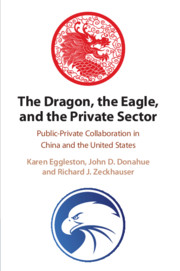 The Dragon, the Eagle, and the Private Sector
The Dragon, the Eagle, and the Private Sector Book contents
- The Dragon, the Eagle, and the Private Sector
- The Dragon, the Eagle, and the Private Sector
- Copyright page
- Contents
- Figures
- Tables
- Acknowledgments
- Abbreviations
- Part I The Framework
- Part II Policy Realms
- 3 Building the Railroads That Build the Nation
- 4 Real Estate’s Intricate Tangle of Public and Private
- 5 A Game like No Other
- 6 The Truest Wealth of Nations
- 7 Show Me Where It Hurts
- Part III The Path Forward
- Index
6 - The Truest Wealth of Nations
Creating Human Capital
from Part II - Policy Realms
Published online by Cambridge University Press: 05 February 2021
- The Dragon, the Eagle, and the Private Sector
- The Dragon, the Eagle, and the Private Sector
- Copyright page
- Contents
- Figures
- Tables
- Acknowledgments
- Abbreviations
- Part I The Framework
- Part II Policy Realms
- 3 Building the Railroads That Build the Nation
- 4 Real Estate’s Intricate Tangle of Public and Private
- 5 A Game like No Other
- 6 The Truest Wealth of Nations
- 7 Show Me Where It Hurts
- Part III The Path Forward
- Index
Summary
Any culture’s human potential for work and wisdom accounts for a significant share of its resources. Developing that potential – a process termed education, training, or human capital development – is a major responsibility of government. Spending for human capital development, using a conservative definition, averaged 5 percent of gross domestic product (GDP) for all Organization for Economic Co-operation Development (OECD) countries, in 2015. In most rich countries, education comes second only to health care as a claim on public spending, as it does in the United States, at 6.1 percent of GDP.
- Type
- Chapter
- Information
- The Dragon, the Eagle, and the Private SectorPublic-Private Collaboration in China and the United States, pp. 120 - 161Publisher: Cambridge University PressPrint publication year: 2021


